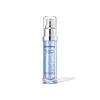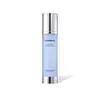What's inside
What's inside
 Key Ingredients
Key Ingredients

 Benefits
Benefits

 Concerns
Concerns

No concerns
 Ingredients Side-by-side
Ingredients Side-by-side

Water
Skin ConditioningPolydecene
Skin ConditioningButylene Glycol
HumectantDipropylene Glycol
Humectant1,2-Hexanediol
Skin ConditioningAmmonium Acryloyldimethyltaurate/Vp Copolymer
Glycereth-25 PCA Isostearate
EmulsifyingCaprylyl Glycol
EmollientCyamopsis Tetragonoloba Gum
Emulsion StabilisingLeontopodium Alpinum Callus Culture Extract
AntioxidantAgar
MaskingAllantoin
Skin ConditioningDiethoxyethyl Succinate
SolventDisodium EDTA
Adenosine
Skin ConditioningIllicium Verum Fruit Extract
PerfumingT-Butyl Alcohol
PerfumingCaprylic/Capric Triglyceride
MaskingSodium Dna
Skin ConditioningGlycerin
HumectantHydrogenated Lecithin
EmulsifyingSodium Hyaluronate
HumectantXanthan Gum
EmulsifyingLysolecithin
EmulsifyingHydrolyzed Swiftlet Nest Extract
Skin ConditioningSodium Ascorbyl Phosphate
AntioxidantFucus Vesiculosus Extract
EmollientPrunella Vulgaris Extract
AntioxidantEthylhexylglycerin
Skin ConditioningCopper Tripeptide-1
Skin ConditioningDextrin
AbsorbentHydroxypropyl Methylcellulose
Emulsion StabilisingArginine
MaskingCI 77220
Cosmetic ColorantWater, Polydecene, Butylene Glycol, Dipropylene Glycol, 1,2-Hexanediol, Ammonium Acryloyldimethyltaurate/Vp Copolymer, Glycereth-25 PCA Isostearate, Caprylyl Glycol, Cyamopsis Tetragonoloba Gum, Leontopodium Alpinum Callus Culture Extract, Agar, Allantoin, Diethoxyethyl Succinate, Disodium EDTA, Adenosine, Illicium Verum Fruit Extract, T-Butyl Alcohol, Caprylic/Capric Triglyceride, Sodium Dna, Glycerin, Hydrogenated Lecithin, Sodium Hyaluronate, Xanthan Gum, Lysolecithin, Hydrolyzed Swiftlet Nest Extract, Sodium Ascorbyl Phosphate, Fucus Vesiculosus Extract, Prunella Vulgaris Extract, Ethylhexylglycerin, Copper Tripeptide-1, Dextrin, Hydroxypropyl Methylcellulose, Arginine, CI 77220
Water
Skin ConditioningButylene Glycol
HumectantDipropylene Glycol
HumectantPanthenol
Skin ConditioningNiacinamide
Smoothing1,2-Hexanediol
Skin ConditioningSodium Hyaluronate
HumectantCentella Asiatica Extract
CleansingScutellaria Baicalensis Root Extract
AstringentChamomilla Recutita Flower Extract
MaskingGlyceryl Caprylate
EmollientEthylhexylglycerin
Skin ConditioningHydrolyzed Jojoba Esters
Skin ConditioningHydrogenated Lecithin
EmulsifyingLysolecithin
EmulsifyingGlycerin
HumectantCaprylic/Capric Triglyceride
MaskingDisodium EDTA
Sodium Ascorbyl Phosphate
AntioxidantSodium Dna
Skin ConditioningAcrylates/C10-30 Alkyl Acrylate Crosspolymer
Emulsion StabilisingXylitol
HumectantCaprylyl Glycol
EmollientLeontopodium Alpinum Callus Culture Extract
AntioxidantTromethamine
BufferingAdenosine
Skin ConditioningCopper Tripeptide-1
Skin ConditioningWater, Butylene Glycol, Dipropylene Glycol, Panthenol, Niacinamide, 1,2-Hexanediol, Sodium Hyaluronate, Centella Asiatica Extract, Scutellaria Baicalensis Root Extract, Chamomilla Recutita Flower Extract, Glyceryl Caprylate, Ethylhexylglycerin, Hydrolyzed Jojoba Esters, Hydrogenated Lecithin, Lysolecithin, Glycerin, Caprylic/Capric Triglyceride, Disodium EDTA, Sodium Ascorbyl Phosphate, Sodium Dna, Acrylates/C10-30 Alkyl Acrylate Crosspolymer, Xylitol, Caprylyl Glycol, Leontopodium Alpinum Callus Culture Extract, Tromethamine, Adenosine, Copper Tripeptide-1
Ingredients Explained
These ingredients are found in both products.
Ingredients higher up in an ingredient list are typically present in a larger amount.
1,2-Hexanediol is a synthetic liquid and another multi-functional powerhouse.
It is a:
- Humectant, drawing moisture into the skin
- Emollient, helping to soften skin
- Solvent, dispersing and stabilizing formulas
- Preservative booster, enhancing the antimicrobial activity of other preservatives
Adenosine is in every living organism. It is one of four components in nucleic acids that helps store our DNA.
Adenosine has many benefits when used. These benefits include hydrating the skin, smoothing skin, and reducing wrinkles. Once applied, adenosine increases collagen production. It also helps with improving firmness and tissue repair.
Studies have found adenosine may also help with wound healing.
In skincare products, Adenosine is usually derived from yeast.
Learn more about AdenosineButylene Glycol (or BG) is used within cosmetic products for a few different reasons:
Overall, Butylene Glycol is a safe and well-rounded ingredient that works well with other ingredients.
Though this ingredient works well with most skin types, some people with sensitive skin may experience a reaction such as allergic rashes, closed comedones, or itchiness.
Learn more about Butylene GlycolThis ingredient is an emollient, solvent, and texture enhancer. It is considered a skin-softener by helping the skin prevent moisture loss.
It helps thicken a product's formula and makes it easier to spread by dissolving clumping compounds.
Caprylic Triglyceride is made by combining glycerin with coconut oil, forming a clear liquid.
While there is an assumption Caprylic Triglyceride can clog pores due to it being derived from coconut oil, there is no research supporting this.
Learn more about Caprylic/Capric TriglycerideCaprylyl Glycol is a humectant and emollient, meaning it attracts and preserves moisture.
It is a common ingredient in many products, especially those designed to hydrate skin. The primary benefits are retaining moisture, skin softening, and promoting a healthy skin barrier.
Though Caprylyl Glycol is an alcohol derived from fatty acids, it is not the kind that can dry out skin.
This ingredient is also used as a preservative to extend the life of products. It has slight antimicrobial properties.
Learn more about Caprylyl GlycolCopper Tripeptide-1 (GHK-Cu) is a skin repairing ingredient known for its ability to boost collagen, improve firmness, and support skin regeneration.
It is a complex made up of a naturally occurring peptide (glycine-histidine-lysine) and copper, an essential trace element.
While studying wound healing, researchers noticed GHK-Cu stimulated hair follicle enlargement and growth by keeping hair in its active growth phase longer. This has made it a promising ingredient for hair regrowth treatments.
Some people have reported increased facial hair. While GHK-Cu can make your hair follicles bigger, it usually doesn’t turn soft, barely-visible facial hairs into thick, dark ones.
Anecdotal reports suggest that overusing copper peptides might lead to premature aging due to excess free copper or enzyme imbalances. This claim isn’t backed by large-scale studies.
Unfortunately, there are limited human studies for this ingredient. While early results are promising, many studies are either small, in-vitro, or not rigorously controlled.
For example, there is a 1998 study that explored the effects of copper tripeptide, vitamin C, tretinoin, and melatonin on skin repair and collagen synthesis.
After one month, increased procollagen production was seen in 7 out of 10 participants using copper tripeptide (more than those using vitamin C, melatonin, or tretinoin.
While the study was exploratory, it offers early evidence that copper tripeptide may support collagen production. Larger, well-designed trials are still needed to confirm its potential and understand individual responses.
Read more about other common types of peptides here:
Learn more about Copper Tripeptide-1Dipropylene Glycol is a synthetically created humectant, stabilizer, and solvent.
This ingredient helps:
Dipropylene glycol is technically an alcohol, but it belongs to the glycol family (often considered part of the ‘good’ alcohols). This means it is hydrating and gentle on skin unlike drying solvent alcohols like denatured alcohol.
As a masking agent, Dipropylene Glycol can be used to cover the smell of other ingredients. However, it does not have a scent.
Studies show Dipropylene Glycol is considered safe to use in skincare.
Learn more about Dipropylene GlycolDisodium EDTA plays a role in making products more stable by aiding other preservatives.
It is a chelating agent, meaning it neutralizes metal ions that may be found in a product.
Disodium EDTA is a salt of edetic acid and is found to be safe in cosmetic ingredients.
Learn more about Disodium EDTAEthylhexylglycerin (we can't pronounce this either) is commonly used as a preservative and skin softener. It is derived from glyceryl.
You might see Ethylhexylglycerin often paired with other preservatives such as phenoxyethanol. Ethylhexylglycerin has been found to increase the effectiveness of these other preservatives.
Glycerin is already naturally found in your skin. It helps moisturize and protect your skin.
A study from 2016 found glycerin to be more effective as a humectant than AHAs and hyaluronic acid.
As a humectant, it helps the skin stay hydrated by pulling moisture to your skin. The low molecular weight of glycerin allows it to pull moisture into the deeper layers of your skin.
Hydrated skin improves your skin barrier; Your skin barrier helps protect against irritants and bacteria.
Glycerin has also been found to have antimicrobial and antiviral properties. Due to these properties, glycerin is often used in wound and burn treatments.
In cosmetics, glycerin is usually derived from plants such as soybean or palm. However, it can also be sourced from animals, such as tallow or animal fat.
This ingredient is organic, colorless, odorless, and non-toxic.
Glycerin is the name for this ingredient in American English. British English uses Glycerol/Glycerine.
Learn more about GlycerinHydrogenated Lecithin is created from the hydrogenation of lecithin (a group of phospholipids). Hydrogenation is a chemical reaction between hydrogen and another element.
This ingredient is an emollient and emulsifier. As an emollient, it helps soften skin by trapping moisture within. As an emulsifier, it prevents oil and water ingredients from separating.
Leontopodium Alpinum Callus Culture Extract is an antioxidant.
We don't have a description for Lysolecithin yet.
Sodium Ascorbyl Phosphate is a form of Vitamin C. It is the salt of ascorbic acid.
This ingredient is more gentle than ascorbic acid. It is also more stable when exposed to light and oxygen.
Vitamin C helps reduce redness, improve skin texture, reduce the effects of aging, reduce the visibility of dark spots, and brighten skin.
Your skin uses Vitamin C to produce collagen and collagen production plays a role in having a strong skin barrier and plump skin. As an antioxidant, this ingredient also helps reduce the signs of aging such as fine-lines and wrinkles.
VItamin C helps brighten skin by blocking the process of skin darkening.
In a 2011 study, Sodium Ascorbyl Phosphate was found to have antibacterial properties. This may help treat acne.
Read more about other types of Vitamin C:
Learn more about Sodium Ascorbyl PhosphateSodium DNA is an emerging anti-aging ingredient.
It is created by taking deoxyribonucleic acid (DNA) and purifying it with sodium hydroxide.
The DNA is extracted from several different animal sources, including: calf thymus, the gonadic tissue of a male sturgeon, or herring / salmon sperm.
You have probably seen this ingredient in anti-aging skincare. But what is it?
DNA is composed of nucleotides, or chemical building blocks. Nucleotides include adenine (A), thymine (T), guanine (G), and cytosine (C). Talk about a flashback to biology! Nucleosides are formed from these nucleotides.
The science behind Sodium DNA is based on an ingredient called Polydeoxyribonucleotide or PDRN.
PDRN are DNA fragments mainly extracted from the sperm cells of trout or salmon. Meaning, PDRN can be derived from Sodium DNA.
PDRN consists of chains of nucleotides and nucleosides mentioned above. They can range anywhere from 80 - 2000 pairs.
Studies show PDRN has the following properties:
Most of the research on PDRN has been done using injectable forms. That’s important, because PDRN is a large molecule and doesn’t absorb well through the skin. So if you’re applying it topically, the effects are likely to be much milder.
Still, topical Sodium DNA is emerging as a trendy anti-aging ingredient. It’s generally well-tolerated and offers good biocompatibility with human skin, making it a low-risk addition to most routines.
Further studies are needed to truly confirm this ingredients anti-aging ability (Remember, retinol has decades of research!).
When using this ingredient, is is best to ask a brand about the source of their Sodium DNA. You'll want to find products where the Sodium DNA is sourced from fish. Some Sodium DNA is derived from calf / cow thymus.
Needless to say, this ingredient is not vegan.
Learn more about Sodium DnaSodium Hyaluronate is hyaluronic acid's salt form. It is commonly derived from the sodium salt of hyaluronic acid.
Like hyaluronic acid, it is great at holding water and acts as a humectant. This makes it a great skin hydrating ingredient.
Sodium Hyaluronate is naturally occurring in our bodies and is mostly found in eye fluid and joints.
These are some other common types of Hyaluronic Acid:
Learn more about Sodium HyaluronateWater. It's the most common cosmetic ingredient of all. You'll usually see it at the top of ingredient lists, meaning that it makes up the largest part of the product.
So why is it so popular? Water most often acts as a solvent - this means that it helps dissolve other ingredients into the formulation.
You'll also recognize water as that liquid we all need to stay alive. If you see this, drink a glass of water. Stay hydrated!
Learn more about Water